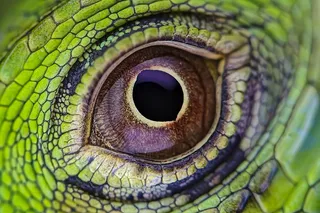In the 1940s, the Nobel prize–winning neurobiologist Roger Sperry performed some of the most important brain surgeries in the history of science. His patients were newts.
Sperry started by gently prying out newts’ eyes with a jeweler’s forceps. He rotated them 180 degrees and then pressed them back into their sockets. The newts had two days to recover before Sperry started the second half of the procedure. He sliced into the roof of each newt’s mouth and made a slit in the sheath surrounding the optic nerve, which relays signals from the eyes to the brain. He drew out the nerve, cut it in two, and tucked the two ragged ends back into their sheath.
If Sperry had performed this gruesome surgery on a person, his patient would have been left permanently blind. But newts have a remarkable capacity to regrow nerves. A month later Sperry’s subjects could see again.
...














